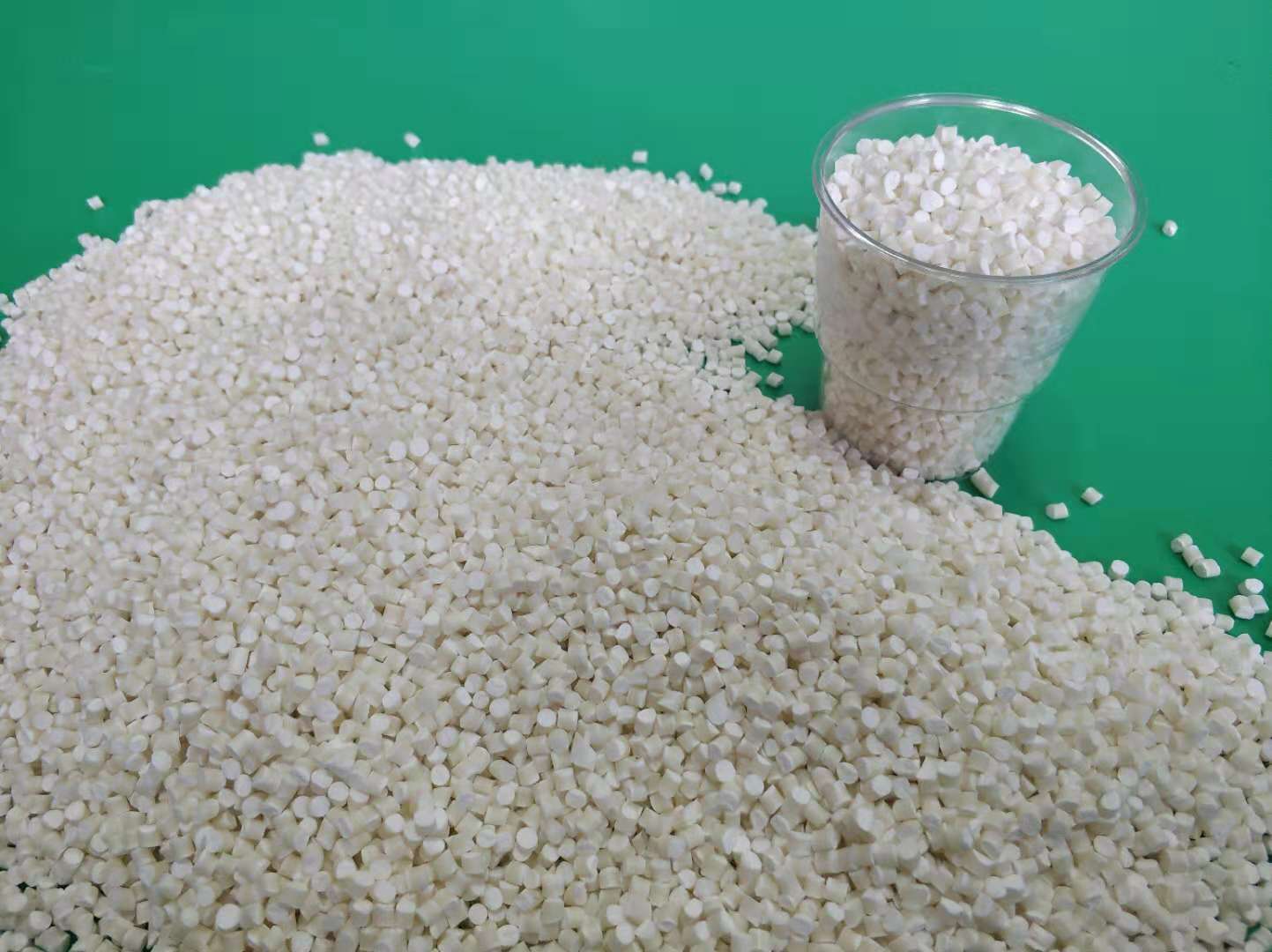-
2018-09-12150碟子
-
2018-09-13一次性环保餐具-碟子
-
2018-09-14一次性可降解餐具-270ml碗
-
2018-09-14一次性餐具-叉子
-
2018-09-14环保餐盒
酶法改性对淀粉颗粒理化性质介绍
淀粉是由葡萄糖分子聚合而成的高分子化合物,目前主流的商品淀粉按照来源可以分为谷物淀粉、豆类淀粉和根茎类淀粉3 类。直链淀粉和支链淀粉是淀粉的两种主要组成成分,淀粉的来源和品种不同,其直链淀粉含量也不同。自然界中也存在一些几乎全部由支链淀粉组成的淀粉,即蜡质淀粉。作为一种重要的可再生和环境友好型资源,淀粉及其衍生物在食品、纺织、造纸、制药、塑料、黏合剂等行业均有广泛的应用。然而,由于淀粉自身存在一定的缺陷,如不溶于水、糊化温度过高、糊化后易回生等,极大地限制了其在工业中的应用,因此,对淀粉的改性研究具有重大意义。
Starch is a polymer compound formed by the polymerization of glucose molecules. Currently, mainstream commercial starch can be divided into three categories based on its source: grain starch, legume starch, and rhizome starch. Amylose and amylopectin are the two main components of starch, and their amylose content varies depending on the source and variety of starch. There are also some starches in nature that are almost entirely composed of branched starch, namely waxy starch. As an important renewable and environmentally friendly resource, starch and its derivatives are widely used in industries such as food, textiles, papermaking, pharmaceuticals, plastics, adhesives, etc. However, due to the inherent defects of starch, such as insoluble in water, high gelatinization temperature, and easy retrogradation after gelatinization, its application in industry is greatly limited. Therefore, the study of starch modification is of great significance.
酶法改性淀粉颗粒是在淀粉糊化温度以下修饰淀粉的一种改性方法。淀粉改性后,其颗粒形态、分子结构、晶型、结晶度、溶解度、糊化特性以及流变学性质等发生改变,可达到改善淀粉的加工特性并提高其应用价值的目的。江南大学食品学院,食品科学与技术实验室,食品与营养协同创新,食品联合实验室的翟一潭、柏玉香、金征宇*等人通过综述淀粉颗粒酶法改性前后结构与性质的变化,以及改性所需的淀粉酶种类、方法等。
Enzymatic modification of starch granules is a modification method that modifies starch below the gelatinization temperature. After starch modification, its particle morphology, molecular structure, crystal form, crystallinity, solubility, gelatinization characteristics, and rheological properties undergo changes, which can improve the processing characteristics of starch and enhance its application value. Zhai Yitan, Bai Yuxiang, Jin Zhengyu * and others from the School of Food Science, Jiangnan University, the State Key Laboratory of Food Science and Technology, the Collaborative Innovation Center for Food Safety and Nutrition, and the International Joint Laboratory of Food Safety reviewed the changes in the structure and properties of starch granules before and after enzymatic modification, as well as the types and methods of amylase required for modification.


天然淀粉以颗粒的形式贮存于植物的各个器官中,主要由直链淀粉和支链淀粉构成。直链淀粉呈线性结构,几乎没有分支,相对分子质量介于105~106之间,支链淀粉呈高度分支的簇状结构,相对分子质量在107~109之间。天然淀粉颗粒由交替出现的“生长环”的无定形层和半结晶层组成,厚度在100~400 nm之间。其中,无定形区主要由直链淀粉分子构成,半结晶区主要由支链淀粉分子构成;半结晶区中又包含结晶片层和非晶片层。淀粉颗粒这种特殊的无定形区和半结晶区交替出现的排列方式,使得其对光产生了特殊的折射现象,即“偏光十字”。
Natural starch is stored in various organs of plants in the form of granules, mainly composed of amylose and amylopectin. Amylose starch exhibits a linear structure with almost no branching, with a relative molecular weight between 105 and 106. Branched starch exhibits a highly branched cluster structure with a relative molecular weight between 107 and 109. Natural starch particles are composed of alternating amorphous and semi crystalline layers of "growth rings", with a thickness ranging from 100 to 400 nm. Among them, the amorphous region is mainly composed of linear starch molecules, while the semi crystalline region is mainly composed of branched starch molecules; The semi crystalline zone also includes crystalline and amorphous layers. The alternating arrangement of amorphous and semi crystalline regions in starch particles results in a special phenomenon of refraction towards light, known as the "polarized cross".
溶胀力和溶解度
Swelling force and solubility
α-淀粉酶和葡萄糖淀粉酶混合水解淀粉颗粒形成的多孔淀粉比相应的原淀粉具有更高的溶胀力和溶解度。经过两次湿热预处理后再用混合酶水解制备的多孔小麦淀粉溶解度和溶胀力分别高于天然淀粉和只经过两次湿热预处理的淀粉样品。这种现象与酶水解后无定形区域的直链淀粉浸出有关,从而导致淀粉样品的溶解度增加。
α- The porous starch formed by the mixed hydrolysis of starch particles by amylase and glucoamylase has higher swelling power and solubility than the corresponding raw starch. After two wet heat pre-treatments, the porous wheat starch prepared by mixed enzyme hydrolysis has higher solubility and swelling power than natural starch and starch samples that have only undergone two wet heat pre-treatments. This phenomenon is related to the leaching of amylose in the amorphous region after enzymatic hydrolysis, resulting in an increase in the solubility of the starch sample.
糊化特性
Gelatinization characteristics
由于对淀粉颗粒的改性在非糊化条件下进行,所以改性淀粉仍然保留了糊化特性,并且酶对淀粉颗粒的修饰会改变其糊化温度和糊化焓。分支酶修饰木薯淀粉颗粒引起改性淀粉糊化起始温度、糊化峰值温度和糊化焓升高。糊化起始温度的升高是由于淀粉颗粒的形态发生了变化,以及直链淀粉发生重结晶。糊化焓的提高表明改性使淀粉颗粒结构的稳定性提高。
Due to the modification of starch particles under non gelatinization conditions, the modified starch still retains its gelatinization characteristics, and enzyme modification of starch particles can change their gelatinization temperature and enthalpy. The modification of cassava starch granules by branching enzymes resulted in an increase in the gelatinization starting temperature, gelatinization peak temperature, and gelatinization enthalpy of the modified starch. The increase in gelatinization starting temperature is due to changes in the morphology of starch particles and the recrystallization of amylose. The increase in gelatinization enthalpy indicates that modification enhances the stability of starch particle structure.
流变性能
Rheological properties
脱支酶对淀粉颗粒的修饰会降低糊化过程中的峰值黏度,但降低程度与淀粉来源有关。在相同的条件下使用脱支酶修饰马铃薯淀粉和玉米淀粉颗粒,改性马铃薯淀粉峰值黏度显著下降了56%,而改性玉米淀粉峰值黏度仅降低了15%。淀粉的峰值黏度主要与直链淀粉含量、支链淀粉的支链长度分布以及淀粉中的某些基团和脂质等成分有关。
The modification of starch particles by debranching enzymes can reduce the peak viscosity during the gelatinization process, but the degree of reduction is related to the source of starch. Under the same conditions, using debranching enzymes to modify potato starch and corn starch granules significantly reduced the peak viscosity of modified potato starch by 56%, while the peak viscosity of modified corn starch only decreased by 15%. The peak viscosity of starch is mainly related to the content of amylose, the distribution of branch chain length of branched starch, and certain functional groups and lipids in starch.
- 上一个: 实用美观玉米淀粉颗粒制作产品优势
- 下一个: 什么是一次性生物可降解购物袋
 150碟子
150碟子 一次性环保餐具-...
一次性环保餐具-... 一次性可降解餐具...
一次性可降解餐具... 一次性餐具-叉子
一次性餐具-叉子 环保餐盒
环保餐盒
相关产品:





